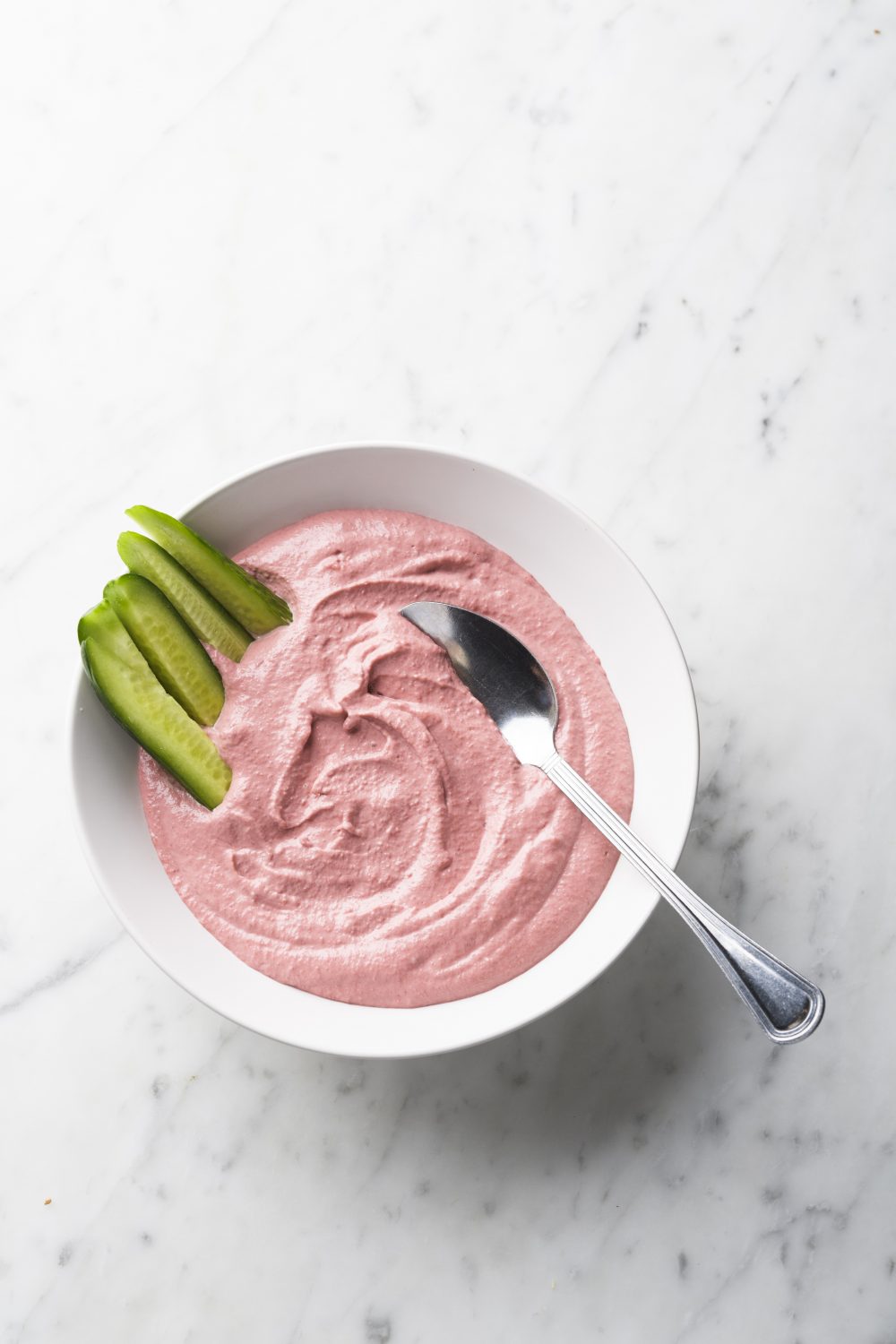
In Cairo, Beets Sweeten Savory Tahini
In Cairo, small bowls of tahini are served at nearly every meal alongside warm baladi, a tender pita-pocket- like bread intended for scooping up the rich sesame seed dip. Egyptians often flavor the tahini, stirring in lemon juice or roasted eggplant and garlic. Our favorite was served at Zööba, a café where chef Moustafa El Refaey blends tahini with pureed beets and hibiscus tea. The unusual combination creates a bright purple dip with a wonderful sweet-savory-salty flavor. To make a similar version, in a food processor combine an 8.8-ounce package cooked beets, 1 cup tahini, ¼ cup water, 2 tablespoons lemon juice and ½ teaspoon kosher salt. Process until smooth, adding more water 1 tablespoon at a time until the desired consistency is reached.
Dukkah Down Under
During a recent visit to Sydney’s Carriageworks Farmers Market, we discovered a delicious variation on Egyptian dukkah, a seasoning blend made from an array of herbs, nuts and spices, including sesame seed, cumin and black pepper. The folks at Barbushco use native Australian ingredients—including macadamia nuts, lemon myrtle and dorrigo pepper— to create a fresh mix called Bush Dukkah. The nutty-citrusy blend is delicious mixed with olive oil for dunking bread (we suggest adding a pinch of flaked sea salt) or tossed with vegetables for roasting. Order ($7 for 120 grams) online at barbushco.com.au.
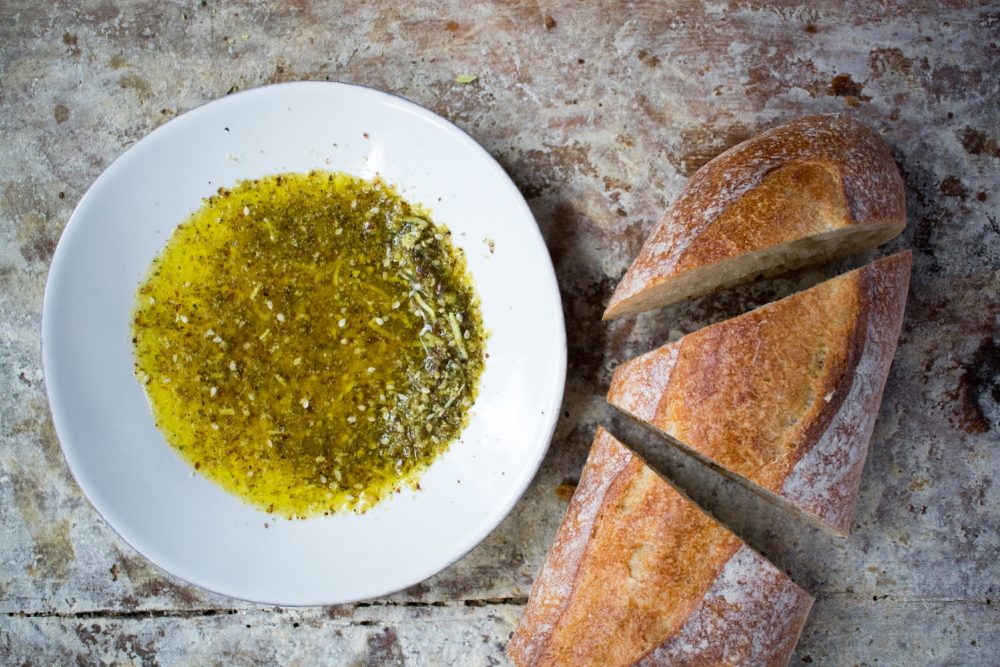
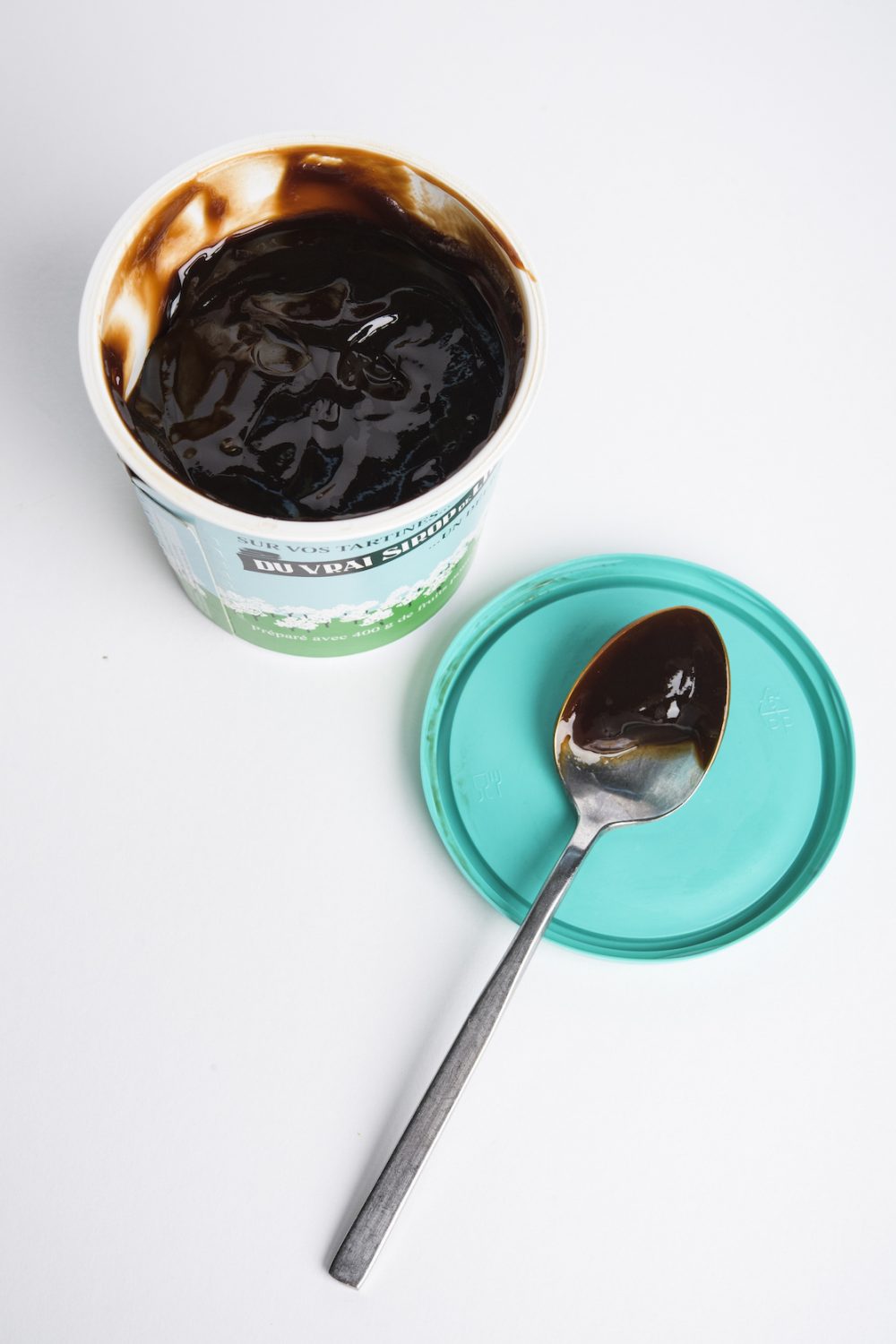
Belgium's Answer to Apple Butter
A cousin of apple butter, Belgian sirop de Liège is made by stewing fruit—mostly apples, but pears, dates, apricots and plums can be added—over low heat to create a pulpy mixture. The pulp then is pressed to extract the juice, which is heated to produce a concentrated paste. In Belgium, it’s most often used in a sweet sauce for meatballs, but also as a jam for toast or with cheese. We also like it as a filling for layer cakes, in thumbprint cookies, spread on waffles and in place of jam with an almond butter sandwich. Small cartons are sold for $12 on Belgianshop.com.
Neapolitan Stovetop Coffee
Though stovetop moka pots—and the bracing espresso they produce—are ubiquitous in Italian homes, coffee lovers in Naples have their own tradition: the cuccumella. Though similarly shaped, the two pots work differently. While moka pots push hot water up through compressed coffee grounds, the Neapolitan version first boils water in the bottom, then is flipped upside down to drip through coffee grounds held in the other side. The result is a milder, smoother espresso. A variety of styles and sizes are available on Amazon starting around $38.
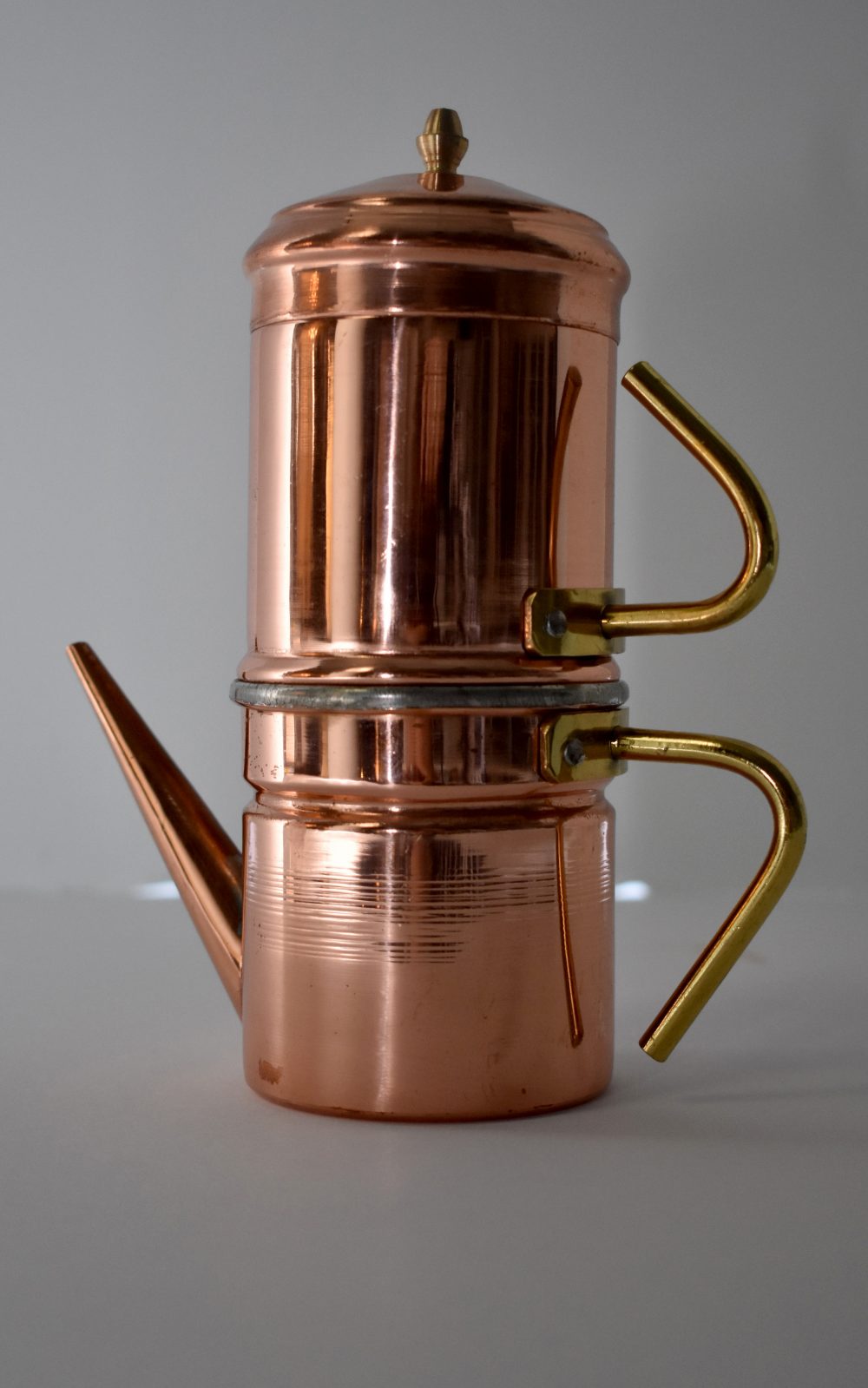
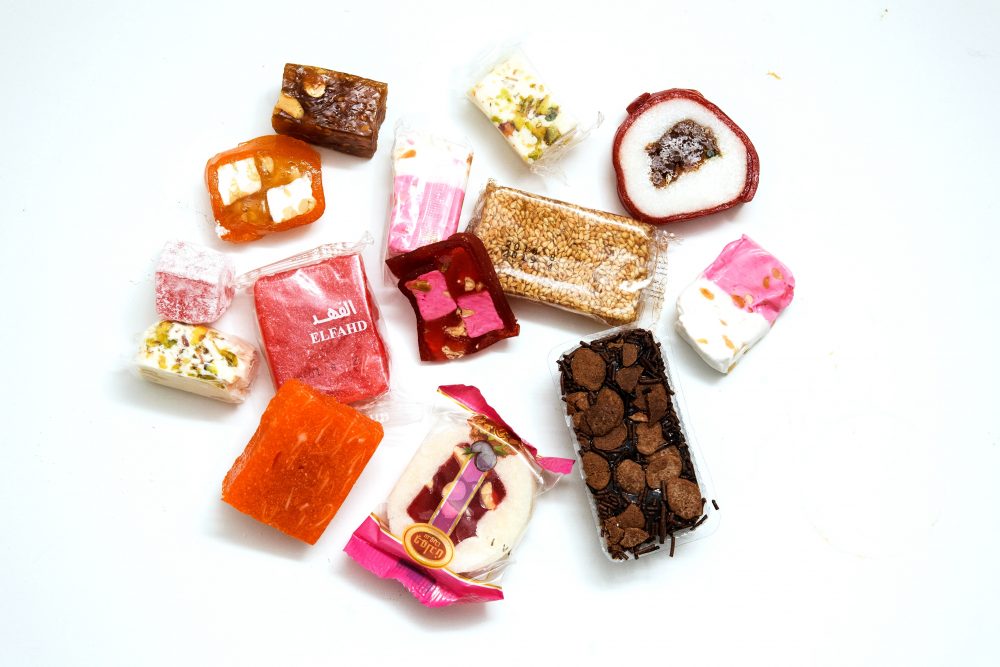
The Sweet Side of Cairo’s Markets
Sweets are a traditional part of Ramadan, and in Cairo’s markets tables overflow with piles of iridescent nougats, jellies, sugary nuts and seeds, and fruity treats. Once sold only during the month-long celebration, the candies now are sold all year. Desertboutique.com sells a 1-kilogram sample pack for about $40.
Lean Your Lids on Little Animals
Getting a propped pot lid to stay in place can be tricky. At a small kitchenware shop in Copenhagen, we found a clever solution made by Nine Lives in Germany—tiny animals cut from birch that hug the edge of the pan, holding the lid slightly ajar. We found a variety of similar critters on Etsy.com for $10.
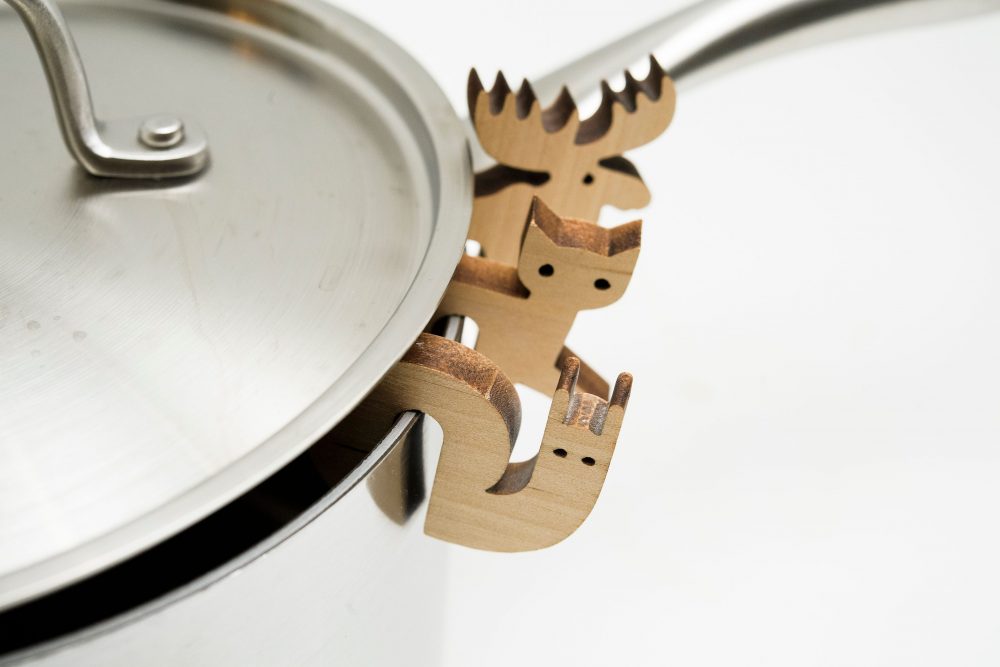

Dsc 0355
Tools that keep fingers safe.
Cooking with Chopsticks
During a recent cooking class in Vietnam, we were reminded of something Asian cooks know well: Chopsticks aren’t just for eating. They also can be excellent cooking utensils.
Our instructor used her wooden chopsticks in multiple ways—beating eggs in a bowl, flipping banana fritters as they fried, even using the tips to gauge the temperature of hot oil (when properly heated, the oil bubbles gently around the tips).
Cooking chopsticks are longer than those used for eating, keeping your hands away from hot pans, bubbling oil or boiling water. They excel at handling small or delicate foods, such as chunks of tofu or breaded cutlets, without leaving a mark on the food. They also work better than tongs to stir or toss noodles and stir-fries. And they allow the cook to turn foods on skewers with precision.
Off the stove, they’re also great for extracting small, slippery ingredients such as olives and roasted peppers from jars. And since they are wood, they don’t conduct heat the way tongs can.
But not all cooking chopsticks are created equal. Some warp over time, while others have a shellac-like finish that can flake off. Still others are too chunky to fit comfortably in the hand. Toiro, a store that specializes in Japanese kitchenware, offers well-made uncoated bamboo chopsticks for $12 a pair. They’re lightweight, about 12½ inches long and comfortable to use. Plus, their fine points afford great precision and control.



